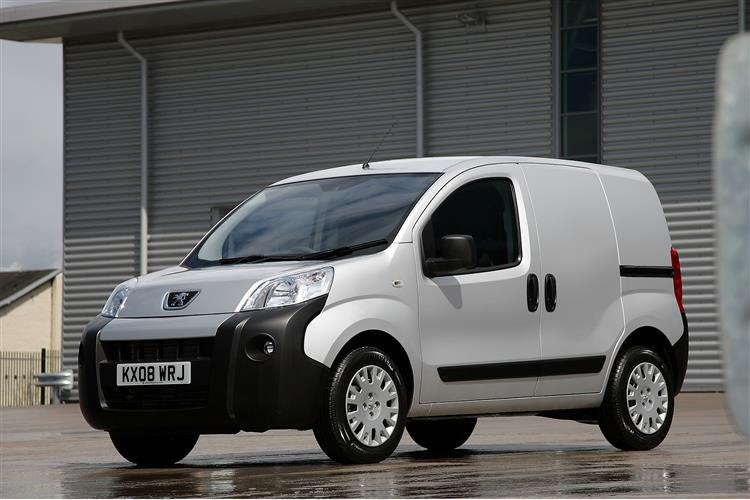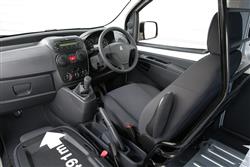This is a sample, showing 30 seconds of each section.
LESS IS MORE (some text hidden) SECTIONED_new_peugeotbippervan_151010
By Jonathan Crouch
Introductionword count: 42
Between 2007 and 2017, Peugeot's little Bipper van set out to persuade British businesses that it was big enough to be all the compact van urban uses really needed. Does it stack up as a used buy? Here's what to look for.
Modelsword count: 13
compact van (1.2, 1.3, 1.4 diesel / 1.4 petrol - X, LX, Enterprise])
Historyword count: 182
Back in 2007, the market for supermini-derived high-cube vans was seen as the next big thing in LCV circles. And the PSA Group bought into it big time, developing one design shared with the Fiat Group that brought us the Fiat Fiorino, the Citroen Nemo and this van, the Peugeot Bipper. Prior to the arrival of this design, any LCV smaller than something Berlingo-sized based on a family hatch was generally a supermini with blanked-out rear windows; a Vauxhall Corsavan or a Ford Fiestavan for instance. For not much more money, little high-cube LCVs like the Bipper promised something better, with almost double the carriage capacity but with pretty much exactly the same roadside footprint. There was also a short-lived 'Bipper Tepee' car-like small MPV version too. In theory, the concept behind the Bipper LCV sounded great. In practice, the idea didn't really catch on. Only Ford followed the Bipper, the Nemo and the Fiorino into the segment for tiny vans and when the time came for the Bipper to be eventually pensioned off in 2017, Peugeot decided not to replace it.
What You Getword count: 496
The Bipper was designed with the urban environment very much in mind and was decently screwed together at its Turkish factory. The wheels are pushed to the corners of the vehicle to maximise interior space and manoeuvrability, while keeping the van compact and wieldy. The substantial wrap-around bumper protects against parking knocks and expensive components like the headlamps, bonnet and radiator are set well back to lessen the chance of them coming to harm. The interior of the Bipper will feel a little confined to those familiar with full size compact vans but there's reasonable space for driver and passenger. The driving position is upright and affords a good view of the Bipper's surroundings, with the seat and the steering wheel offering a good range of adjustability. Cab stowage space for oddments is less generous than in models from the next class up, but with 12 compartments to choose from, there should be room for most of the essentials. There's even the option of a folding dashboard desk. So, will this van cope with the kind of use your business demands? Well let's find out. Notebooks at the ready: here are the figures that you'll need. At first glance, the Bipper does look rather small. At 3,864mm long and 1,589mm wide, this is after all a compact van with a footprint tinier that most superminis. Despite this however, there's a 2.5m3 load volume to play with (only 0.5 cubic metres less than Peugeot's MK2 Partner van) and a payload capacity of 610kg. That volume can be increased by means of an Extenso folding passenger seat (if the original buyer had that fitted) which flops down to increase capacity to 2.8m3. That improvement may not sound like much but it increases the available load length from 1,523mm to 2,491mm which is really handy when you're trying to cram longer items inside. The load bay is accessed through asymmetrically-split rear doors on the standard model with the slimmer of the two mounted on the offside. They can be pushed through 90° and through 170° if you release the easy-to-unlatch door stays. A sliding side door was available on plusher versions, with a second sliding door residing on the options list. One issue is that the apertures behind these side doors are narrow (1041mm high and 644mm wide), so large items will probably have to go in through the rear (where the door aperture is 1,060mm high and 1,140 mm wide). Here, there's a low 527mm loading height and 1,064mm between the wheel arches. Load bay width is 1,473mm, while maximum height is 1,205mm. Around half-a-dozen load tie-down rings are there to secure loads but if you forget to use them and your cargo slithers forward, then you'll be protected by a restraint frame that angles backwards into the cargo area. The doors are lined to half their height but many original buyers added in ply-lining to protect the rest of the cargo area against minor scrapes and scratches.
To see the full road test text contact us on 0330 0020 227
Pictures (high res disabled)

.jpg)
|
.jpg)
|
.jpg)
| |||
.jpg)
|
.jpg)
|
.jpg)
| |||
.jpg)
|
.jpg)
|

|
Scoring (subset of scores)
Category:
| Performance | |
| Handling | |
| Comfort | |
| Space | |
| Styling, Build, Value, Equipment, Depreciation, Handling, Insurance and Total scores are available with our full data feed. | |



